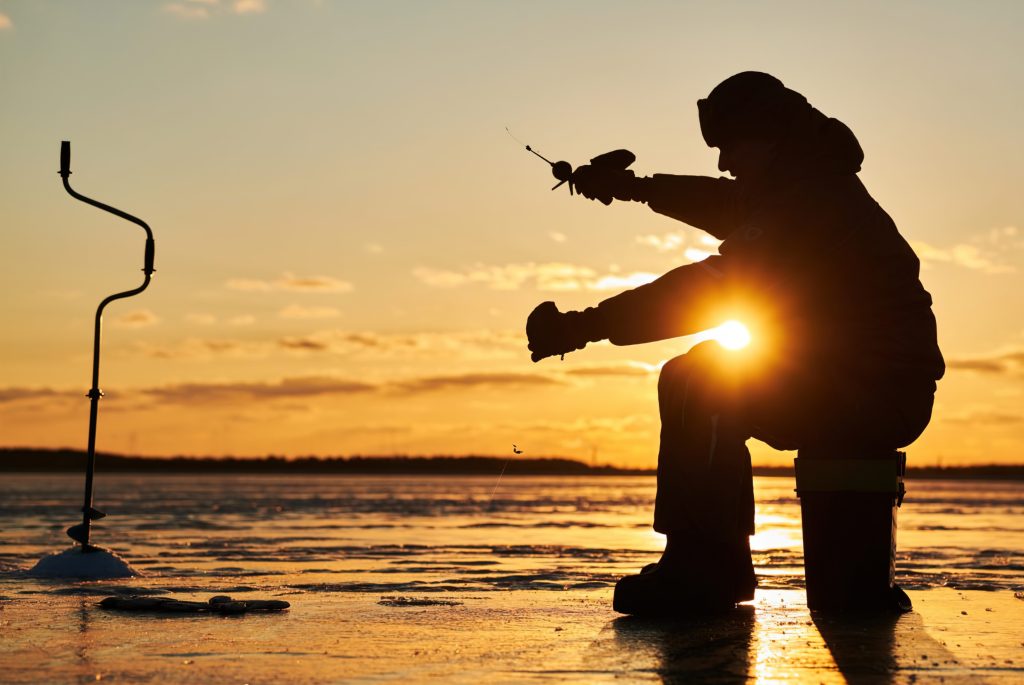Ice fishing, also known as “hard water fishing,” is a popular winter pastime among anglers who enjoy the thrill of catching fish in freezing temperatures. This article will explore the world of ice fishing, how it works, and why it can be an exciting and rewarding type of fishing.
Best Time for Ice Fishing
The best time for ice fishing largely depends on the species of fish being targeted. Some fish, such as walleye, tend to be more active during the low light hours of dawn and dusk, while others, like perch, can be caught throughout the day. Understanding the seasonal changes in fish behavior and migration patterns can help anglers determine the best times to fish.
In general, ice fishing is typically done during the winter months when bodies of water freeze over. However, it’s important to note that ice thickness can vary greatly depending on location and weather conditions. Anglers should always check the thickness of the ice before venturing out and avoid areas with thin or cracked ice.
Another factor to consider is the weather. Fish tend to be more active and willing to feed when the barometric pressure is steady or rising, rather than when it’s falling. This means that ice anglers may have better luck on days when the weather is clear and calm, rather than stormy or windy.
Ice Fishing Techniques for Perch
Perch is a popular target for ice anglers, and there are several effective techniques for catching them. One of the most common techniques is using jigs and spoons tipped with live bait or soft plastics. These lures can be presented at different depths to entice the perch to bite. Another effective technique is using tip-ups, which are a type of fishing trap that allow the angler to set multiple lines and monitor them from a distance. This technique can be especially useful for targeting larger perch.
When using jigs and spoons, it is important to choose the right size and color to match the conditions and the preferences of the perch. Bright colors like chartreuse, pink, and orange can be effective in low light or murky water, while natural colors like brown and green can work well in clearer water. Anglers can also experiment with different types of live bait, such as minnows or maggots, to see what works best in their particular fishing location.
Ice Fishing Techniques for Walleye
Walleye is a popular target for ice anglers, and effective techniques can help increase your chances of catching this species. One of the most effective techniques for walleye is using live minnows. This technique involves hooking a live minnow through the lips or back and lowering it to the desired depth using a slip bobber or a jig. The minnow will swim around, attracting walleye to the bait.
Jigging spoons are another effective technique for walleye. These lures are designed to mimic the movement of baitfish and can be used to entice walleye to strike. Vertical jigging is also a popular technique, which involves dropping a jig to the bottom and then slowly lifting it up and down to create a lifelike movement.
When targeting walleye, it’s important to focus on fishing during low light conditions, such as early morning or late afternoon. Walleye are more active during these times and tend to be more aggressive in their feeding.
Tip-ups are another effective technique for targeting walleye. These devices allow you to set multiple lines and monitor them from a distance. When a walleye takes the bait, the tip-up will signal, letting you know that you have a catch.
Ice Fishing Techniques for Pike
Pike is a predatory fish that can be challenging to catch through the ice, but also very rewarding. To increase your chances of success, it’s important to understand effective techniques for ice fishing for pike.
One technique for ice fishing for pike is using large baits such as dead baitfish, sucker minnows, and large jigs. This is because pike are aggressive and tend to go for larger prey. When using dead baitfish, it’s important to cut them into pieces and use a large hook to ensure the pike can’t swallow it whole.
Vertical jigging is another effective technique for catching pike through the ice. This technique involves dropping a heavy jigging spoon to the bottom of the water column and then lifting it quickly and erratically to mimic the movement of a wounded baitfish. Pike are attracted to the sudden movements and will often strike the jig as it falls back down.
Tip-ups are also a popular and effective method for ice fishing for pike. A tip-up is a type of fishing trap that allows the angler to set multiple lines and monitor them from a distance. When a fish takes the bait, a flag is triggered, indicating a bite. This method allows for the angler to set multiple lines and increase their chances of catching a pike.
Ice Fishing Techniques for Other Species
While perch, walleye, and pike are common targets for ice anglers, there are also other species to consider, such as trout, crappie, and panfish. Effective techniques for these species include using small jigs or soft plastics and fishing in deeper water.
Safety and Equipment Tips
Ice fishing can be dangerous if proper safety precautions are not taken, such as checking ice thickness before venturing out and wearing appropriate clothing and gear for cold temperatures. Anglers should also have the proper equipment, including a specialized ice auger, a shelter, and a sled for transporting gear.
Conclusion
In conclusion, ice fishing can be a thrilling and rewarding experience for anglers who are willing to brave the cold temperatures and ice-covered waters. Understanding the best times to fish and the proper techniques and equipment for each species can increase your chances of a successful catch. Stay safe and enjoy the adventure of ice fishing!

